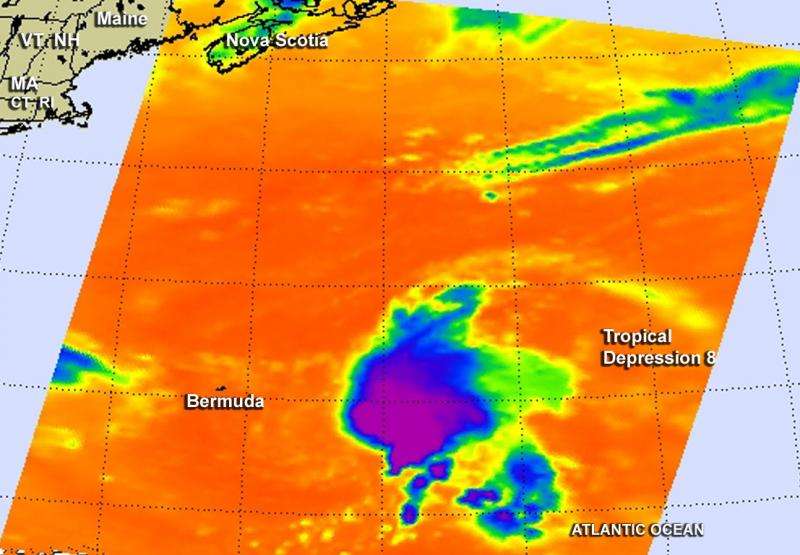NASA takes an infrared baby picture of Atlantic's Tropical Depression 8

NASA's Aqua satellite captured a "baby picture" of the eighth tropical depression of the Atlantic Ocean Hurricane Season.
On Sept. 9 at 5:53 UTC (1:53 a.m. EDT), the AIRS (Atmospheric Infrared Sounder) instrument aboard NASA's Aqua satellite provided an infrared look at newborn Tropical Depression 8. AIRS data showed the coldest cloud top temperatures near -63F/-53C were being pushed east of the center of circulation.
The National Hurricane Center (NHC) noted that "the depression remains sheared, with the low-level center located just to the west of the western edge of the main area of deep convection. The vertical shear over the depression, which is currently near 20 knots (23 mph/37 kph) is forecast to diminish in 24 to 48 hours."
At 11 a.m. EDT (1500 UTC) on September 9, the center of Tropical Depression Eight (TD8) was located near latitude 30.7 North, longitude 60.8 West. That's about 260 miles (420 km) east-southeast of Bermuda. Maximum sustained winds were near 35 mph (55 kph) with higher gusts. The National Hurricane Center (NHC) forecast calls for some strengthening during the next 48 hours, and the depression is expected to become a tropical storm later on September 9. The estimated minimum central pressure is 1011 millibars.
When TD8 reaches tropical storm status it will be renamed "Henri."
The depression was drifting toward the east-southeast near 3 mph (6 kph). NHC expects TD8 to move in a northerly direction. On the forecast track, the center will pass well east of Bermuda at night on September 9.
In three days, by September 12, TD8 is forecast to be over water temperatures near 17 degrees Celsius (62.6 Fahrenheit). Tropical cyclones need sea surface temperatures of at least 26.6C (80F) to maintain strength. As a result of the cooler sea surface temperatures, the NHC expects it to be an extra-tropical storm by that time.
Provided by NASA's Goddard Space Flight Center




















